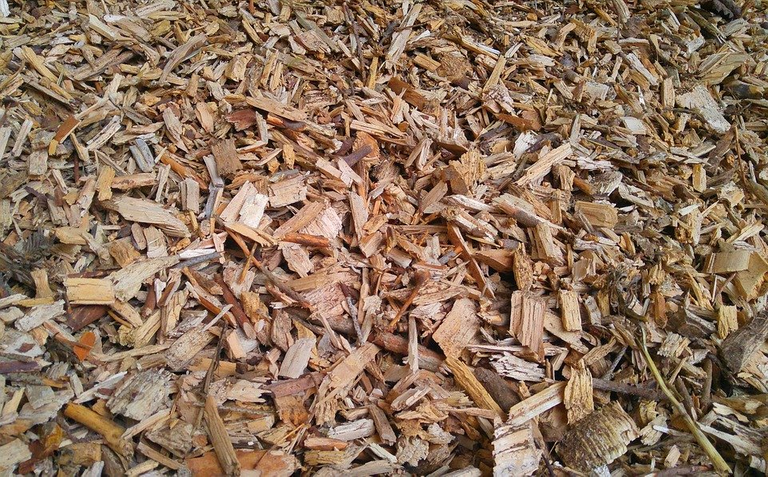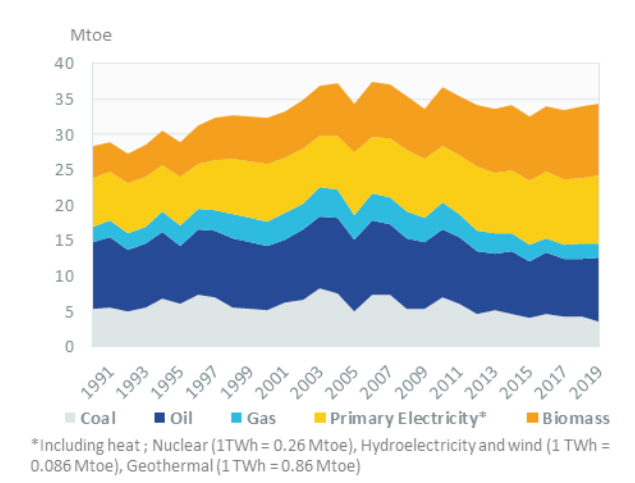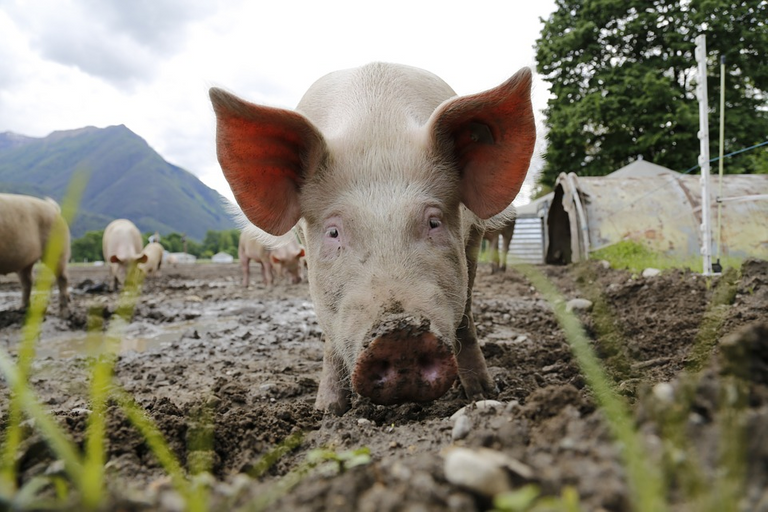Bioenergy from a Finnish point of view
Hi,
I'm writing different posts based on the courses I'm taking in my university during my Masters' studies. I've started my studies in Energy Technology and I will try to write posts about the topics in a way most people will be able to read and follow.
Bioenergy
Bioenergy is use of biological sources, biomass, for energy. Occasionally this is seen only as electricity, but biomass is commonly used also to produce heat. The heat can be used for heating but also to create movement (like in engines).
Biofuels are fuels derived from biological sources, not only liquid biofuels like bioethanol and biodiesel, but also in other forms. One common form of biofuel is biogas, made from biological sources. Not to be mixed with "natural gas", which is a fossil fuel even though it is called "natural".

Wood chips, source: Pixabay
Bioenergy gives the possibility to find new uses for biomass, especially for the parts which currently do not have a clear use. This allows the better use for biomass, for example food waste or biological residues from different processes including biomass.

Finnish energy consumption - Source
In Finland, a decision has been made to stop the use of coal by 2030 and the use of bioenergy allows to replace coal with renewable energy. This allows reduction of greenhouse gas (GHG) emissions, as instead of burning fossil energy, we can burn biomass which is not releasing new CO2 in the atmosphere, as it's a part of natural CO2 cycle.

A good source for biogas, source: Pixabay
Typical Finnish bioenergy sources
Finland has a lot of forests and quite much agriculture so the bioenergy production is built around these. Globally bioenergy can be produced from multiple sources not feasible in Finland, for example from algae, but in Finland the most typical options are:
- Wood based bioenergy
- Agricultural based bioenergy
- Bioenergy from organic waste
Wood based bioenergy is most usually pellets, wood chips or wood residues used in wood processing. For example, multiple modern pulp mills are using wood residues to their own energy production, reducing need for outside energy.
Agricultural based bioenergy is either plant based biomass or biogas from animal feces. The biogas can be made from multiple biological sources, but feces is best used as biogas, as it's not feasible to be burned like straws, wood chips or others. The biogas can be used in heat or electricity production or in transportation.
Organic waste can be collected and processed to biogas. As it would be an optimal situation where people are not creating organic waste, it's most likely that organic waste will never reach zero and is better to turn the organic waste into biogas rather than just composting it.
Is biomass suitable everywhere?
Biomass is usable anywhere, but if there is less biomass available for energy use, it can be less suitable option. The usability of biofuels is basically better when the site of use is closer to the source of the biofuel. The need for transportation with biofuel increases the price, as biofuels are not as energy dense as most used fossil fuels. If you compare transporting biofuel (for example wood pellets or wood chips) to a fossil fuel (for example coal), you'll need more trucks to transport the same amount of energy.
The amount of energy is highly dependent on the moisture % of the biomass, especially when solid biofuels are to be burned. When the biomass is more moist, it will be heavier to transport and will give less energy, as part of the energy is needed to burn the humidity away. For this reason most biomass will need to be dried before it will be used to get the most benefit out of the biomass. However, this can be done naturally without any additional energy so it will not reduce the usability of bioenergy. For example, wood can be dried outdoors before transportation and use.
Even though fossil fuels also require transportation, they are more energy dense and for this reason are more economical to transport while bioenergy transportation increases the price more quickly. But still biomass is affordable especially in the areas with large amounts of biomass production with residues useable as energy.
The good and the bad
The negative aspect on bioenergy is that the biomass used is away from other use. The biomass used for energy usually could be used for other uses; or at worst, natural areas are destroyed to create biomass-fields only to generate more biomass. In multiple different countries, the tropical jungles are chopped down to grow more biofuel materials, causing endangered species to suffer.
Also, even though biomass is renewable, there is always a limit on how much biomass we can grow and this sets a limit to the biofuels available. Only a certain amount of current energy use can be replaced with bioenergy, so it should never be the mainstream energy source.
However, the benefit of liquid biofuels is that it allows the use of current cars with combustion engines before the electric/hydrogen cars will be more common and the infrastructure will expand. Ultimately the electric/hydrogen vehicles can go mainstream as there will be a strong market for used vehicles, so more and more people will afford them. At least in Finland, most people do not purchase new cars but instead buy used cars, so having enough used electric cars will be necessary to get the main population switch to electric/hydrogen vehicles.
While waiting for this, biofuels can be used to reduce the emissions without the need of a new car. But as the biofuels are not a sustainable main energy source for vehicles, the biofuel vehicles shouldn't be the main option.
The same issues are with energy production, as bioenergy shouldn't be the main source of energy for electricity/heating and other energy sources are important. However, biomass still can help in many cases and allow the efficient use of biomass. Bioenergy is widely used especially in the pulp industry, as they can use residue to generate energy needed in the pulp production, reducing their need for external energy. The need for bioenergy also allows use of agricultural residues while still reducing the need of fossil fuels.

Wood pellets, Source M-Pelletti Oy
A nice read! Hope you won't just learn to burn all of the forests as I hoped you're pro-nuclear too :D
Thank you :) Haha yes I am pro-nuclear but I will post these as my studies go further.